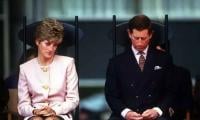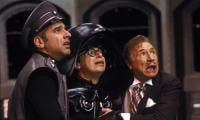If we look at our political history from 1990 to the present in four-year intervals, the number of transitions of the chiefs of army staff (COAS), quite accurately, corresponds to transitions in the government.
For arguments sake, let’s entertain an interpretation of this pattern before we dismiss these transitions as mere coincidences.
A common summation of Pakistan’s political history over the past 25 years is that the 1990s was the lost decade with numerous shuffles in the government, the early 2000s was the martial law era and the late 2000s entailed the revival of democracy.
These are seemingly unconnected periods. Yet, when one reads old news reports, there are uncanny similarities between them and present-day news stories to the extent that these old accounts would not seem out of place in 2016. I am certain that many journalists will at least partially agree with this.
It doesn’t help that our media discourse on government transitions is rife with conspiracy theories. Is the imposition of martial law or the dissolution of assemblies historically dependent on the whims of a few individuals? Or do such decisions take place in Washington or Riyadh? There are as many explanations as there are conspiracy theories.
What is often found wanting is an analysis based on these underlying themes. There certainly are patterns to be unearthed before more conspiracy theories take over. These patterns also encompass numerous shades of opinions.
Let’s examine our history through one such pattern.
The period between 1990 and 1994 was a tumultuous time in Pakistani politics when several governments were dismissed in quick succession. Benazir Bhutto’s government was dismissed in 1990 and Nawaz Sharif became prime minister. However, a contest of power ensued between the president and the prime minister. As a result, both were dismissed, paving the way for fresh elections and Bhutto’s return to power in 1993.
At the same time, COAS Mirza Aslam Beg handed over the reins to General Asif Nawaz in 1991, who later died of a sudden heart attack in January 1993, leaving the post vacant for Gen Abdul Waheed.
We have here two transitions in the military and two transitions in civilian government.
In 1996, Bhutto’s government was dismissed on charges of corruption once again and Sharif formed a new government. This period saw one transition of the COAS, where Gen Abdul Waheed, after completing his term, handed over the reins to Gen Jehangir Karamat. Between 1994 and 1998, there was one transition in the military and one transition in the government.
But perhaps the most exciting times in the 1990s came towards its end when the Sharif government was dismissed in 1999 and replaced with a technocratic government. This period saw Gen Musharraf taking over as the COAS from Gen Karamat in 1998. Once again, one transition took place in both the government and the military’s highest office.
The period between 2002-2006 was widely brandished as a period of unprecedented stability. We saw the technocratic government continuing from the late 1990s and Gen Musharraf served as both the COAS and the chief executive.
The trend continued. There were zero transitions in the government and zero transitions in the COAS.
Another exciting period was in 2007 during the Lawyers’ Movement. We also saw a return to a popularly elected PPP-led government in 2008. Gen (r) Musharraf, who was now just a president, handed over the reins to Gen Ashfaq Parvez Kayani and stepped down from managing the country.
The numbers hold fast. There was one transition of the COAS and one transition in the government.
Interestingly, the government transitions were preceded by the dissolution of assemblies and followed by popular elections. Now, they are only preceded by popular elections.
Between 2010 and 2014, journalists and scholars were ecstatic when an elected government in Pakistan, after completing its term, paved the way for another democratic transition through popular elections. Gen Kayani, who was now nearing the end of his extension, handed over the post to Gen Raheel Sharif.
During this period, there was one transition in the government and one transition within the army.
The period between 2014 and 2018 raises some questions. If Imran Khan and Dr Tahirul Qadri were to be taken at face value, several governments would have come and gone by now. So far, we have seen only one transition in the COAS and our model predicts that PML-N government will survive till 2018.
But will the transition of a COAS correspond with a transition in the government? This may seem likely.
In the social sciences, an investigation of a phenomenon often starts with simple factual information. Our model provides for this, irrespective of the actual significance of a phenomenon or event, though historically moments of change in the military top brass have been politicised. In 1992, Benazir’s long march was seen to be losing momentum when the sudden death of Gen Nawaz changed the political opportunity structure for all political parties. Quite recently, much was made of the timing of the PTI’s supposed dharna and the arrival of a new chief.
What is the significance of the number four? The term of an elected government in Pakistan, according to the 1973 constitution, is five years. A COAS serves for three years. It’s tempting, as a casual observer, to mull the possibilities if both terms were for four years.
To be sure, there is never a magic bullet that solves complex problems, such as the need for a stable coalition, in a jiffy. Many other variables play a role. We can think of some right off the bat, such as external threat perception and the health of the economy, etc. Furthermore, the numbers above do not account for the interim governments.
The writer is a PhD candidate at the Hong Kong Baptist University.
Email: siddiqui.aayaz@gmail.com















